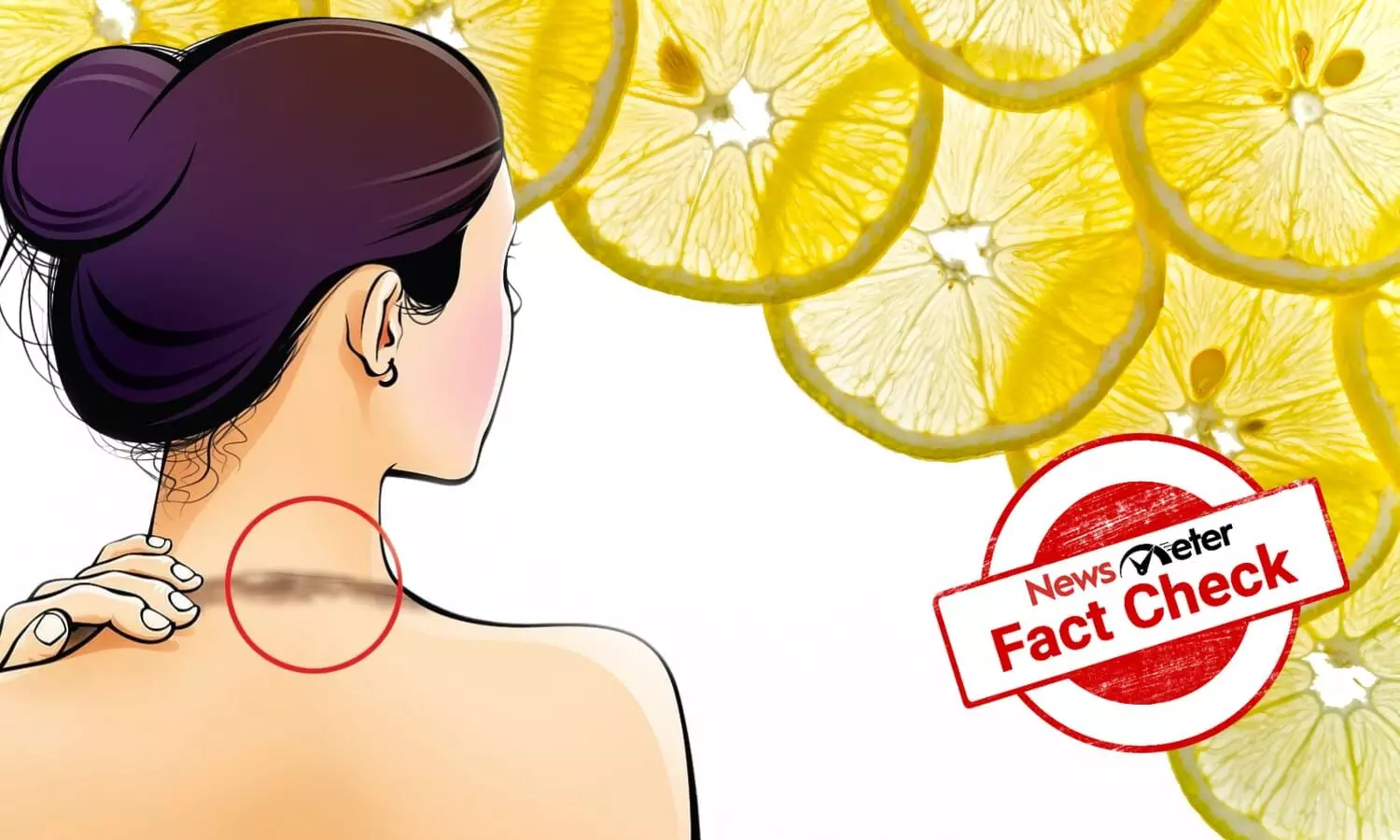Fact Check: Can applying lemon eliminate dark patches on neck?
Here is what you need to know
By Sunanda Naik
Hyderabad: An Instagram video of an AI-generated bot ‘doctor’ claims that applying lemon can potentially eliminate dark patches on the neck.
Applying lemon on the skin may have some benefits but it can also cause irritation and inflammation and might trigger skin conditions. Lemon is a rich source of vitamin C and citric acid. Lemons are generally known for their detoxifying properties especially when consumed orally.
However, when applied over the skin lemon might cause more harm than good.
Fact Check
NewsMeter found the post to be misleading.
Dark patches are usually harmless and non-contagious. Darkening of joints or folding areas such as the neck, fingers, knees, genital areas and under the eyes is usually not a disease in itself but caused due to certain health conditions.
It usually occurs in people who are obese or diabetic or have a predisposition to diabetes. If you notice dark patches on children, it may be a sign that the child is at high risk of developing Type 2 diabetes.
Other possible causes could be a deficiency of hormones from adrenal glands, growth hormone therapy, endocrine dysfunction, autoimmune disorder, hypothyroidism, due to oral contraceptives and certain types of cancer.
Rarely, the dark patches may also be a result of Acanthosis Nigricans.
Acanthosis Nigricans is most commonly caused due to high blood insulin levels also known as insulin resistance. Insulin resistance is seen in people who are overweight or obese or are likely to develop Type 2 diabetes in future.
Scrubbing or using home remedies like lemon or any chemical-laden products to remove the darkness might cause irritation. All you need to do is just gently clean the skin and do not use any kind of bleach scrub or over-the-counter exfoliating treatment.
It is also beneficial to get a diagnosis done by a physician. You can get rid of these patches naturally (unless under certain medical conditions) with a few lifestyle changes such as a good diet, physical activity, drinking water, avoiding sugary drinks, limiting highly processed food and working on healthy body weight.
Apart from Acanthosis Nigricans, there are other medical conditions that cause dark skin patches such as:
Dermatitis neglecta occurs when a person has a buildup of dead skin cells, oil, sweat, and bacteria on their skin. The buildup of debris causes discolouration and skin plaques.
Dyskeratosis congenita causes hyperpigmentation of the skin of the neck. The neck may look dirty.
Erythema dyschromicum perstans causes slate-gray, dark blue, or black irregularly-shaped patches of skin on the neck and upper arms. Patches can sometimes appear on the torso. People with high blood insulin levels can experience areas of hyperpigmentation on the neck, especially on the back of the neck. This occurrence is common in women who have polycystic ovary syndrome (PCOS).
Lichen planus pigmentosus (LPP) causes scarring to develop in certain areas. Symptoms include grey-brown to black patches on the face and neck. The patches are not itchy.
Tinea versicolor is a type of yeast that is naturally present on the skin, too much of it or overgrowth can cause dark patches on the neck, back, chest, and arms.
The skin may appear especially dark if a person has recently been exposed to the sun. The skin patches may also itch.
Applying lemon on these patches might worsen the appearance and cause burning and irritation on the skin. It may also delay the treatment in some cases.